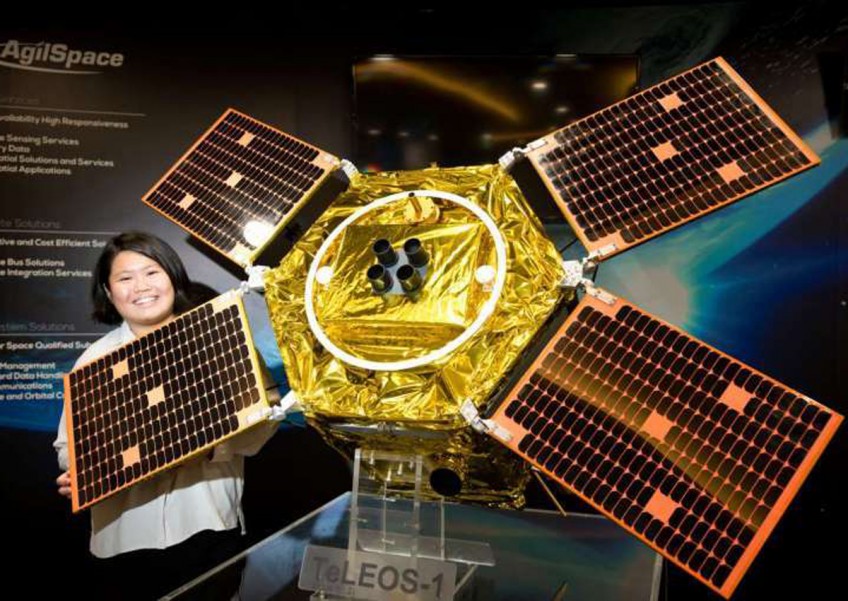Milestone for Singapore as six satellites launch into orbit

While Singaporeans got ready to settle down for the night, in India, a milestone was crossed.
At 8.48pm last night, the first commercial earth observation satellite from Singapore was launched into space orbit. Three minutes later, five smaller satellites were released, to take the Republic closer to fulfilling its ambitions of conquering the final frontier.
Riding on a rocket owned by the Indian Space Research Organisation (ISRO), the six made-in-Singapore satellites blasted off from the Satish Dhawan Space Centre in Andhra Pradesh at about 8.30pm, to claps and cheers from scientists present.
Monitoring it was Singapore's chief defence scientist Quek Tong Boon and senior researchers.
Released from ISRO's Polar Satellite Launch Vehicle (PSLV-C29), the satellites will now hover about 550km above ground near the equator for up to five years.
Calling it a "golden launch", Dr P. Kunhikrishnan, director of the space centre, noted it was the 50th launch from Andhra Pradesh, as well as Singapore's 50th anniversary, and the 50th year of bilateral co-operation between India and Singapore. Indian Prime Minister Narendra Modi also congratulated ISRO for the successful launch in a tweet.
The satellites were built by teams from defence manufacturer Singapore Technologies Electronics (ST Electronics), Singapore-based space technology firm Microspace Rapid, the National University of Singapore (NUS) and Nanyang Technological University (NTU).
The biggest among them, built by a team made up of scientists from ST Electronics, DSO National Laboratories and NTU, is the 400kg earth observation satellite, TeLEOS-1. Carrying a camera that can take pictures at ground resolution of up to 1m, the satellite can conduct surveillance missions for maritime and border security. It can last up to five years.
The other smaller satellites, built by NUS, NTU and Microspace Rapid, will be used for tropical environmental monitoring and remote sensing.
The launch comes four years after Singapore put its first home- grown micro-satellite, X-Sat, in space. Smaller satellites have also been launched by NTU.
Thanking ISRO's staff for their efforts, Mr Quek said the new satellites would allow Singapore to test its capabilities and reap the benefits from space technology.
ST Electronics president Lee Fook Sun said the successful launch capped a "very intensive and challenging phase" to design and build the satellite from scratch, giving engineers confidence to build more advanced satellites.
The latest developments will boost Singapore's space aspirations, which were laid out in 2013 when the Government opened the Office for Space Technology and Industry (OSTIn) under the Economic Development Board. OSTIn's mission is to plan and execute economic strategies to grow Singapore's nascent space and satellite industry.
The US-based non-profit research organisation Space Foundation said the global space economy grew 27 per cent from 2008 to US$314 billion (S$442 billion) in 2013. Experts here say that the space industry - and small-satellites field, in particular - are a natural fit for land-scarce and talentfocused Singapore.

This article was first published on Dec 17, 2015.
Get a copy of The Straits Times or go to straitstimes.com for more stories.